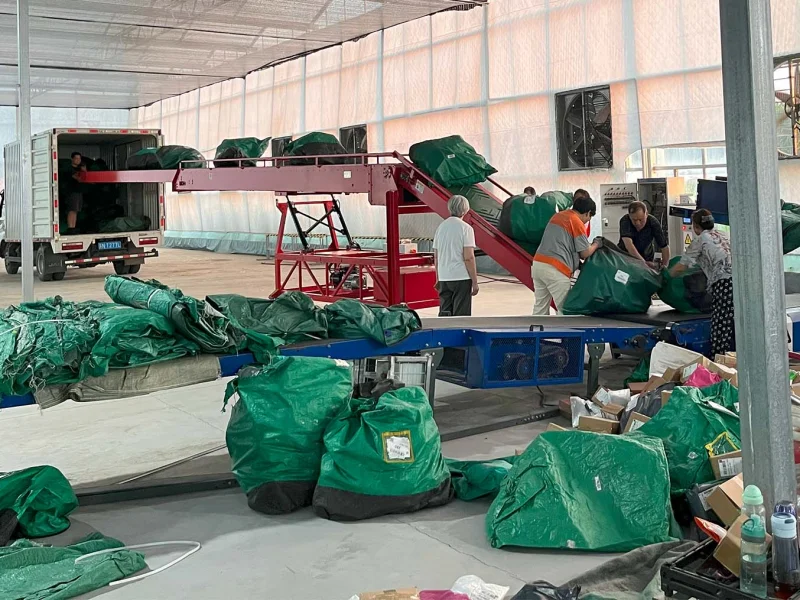
How to Control the Noise and Vibration of the Telescopic Belt Conveyor?
In industrial production environments, telescopic belt conveyors, as critical equipment, often face issues with noise and vibration, impacting workers' health and comfort. To address this, controlling conveyor noise and vibration has become an important focus. This article will introduce the sources and hazards of telescopic belt conveyor noise and vibration, exploring relevant control methods and technologies to improve conveyor operational comfort and the workplace environment.
I. Sources and Hazards of Noise and Vibration
- Noise Sources : Telescopic belt conveyor noise mainly originates from the drive system, impact noise from load materials, and vibration noise generated by the conveyor itself. Excessive noise can damage workers' eardrums and hearing, affecting both work efficiency and health.
- Vibration Sources : Telescopic belt conveyor vibration is primarily caused by the drive system, transmission gears, and the movement of load materials. Excessive vibration can lead to increased equipment wear, loosening of components, reduced equipment lifespan, and potentially cause equipment failures and accidents.
II. Noise and Vibration Control Methods and Techniques
1. Equipment Optimization Design
- Selecting Low-Noise and Low-Vibration Equipment: When purchasing conveyors, choose equipment designed to minimize noise and vibration, such as those with low-noise motors and noise reduction measures.
- Designing Effective Vibration Damping Measures: Implementing vibration-damping devices and support structures can reduce vibration transmission and diffusion, lowering noise and vibration generation.
2. Acoustic Isolation and Sound Absorption Measures
- Using Soundproof Enclosures and Panels: Installing soundproof enclosures or panels around the conveyor can block noise transmission. Materials with good sound-absorbing properties, such as acoustic panels and soundproof foam, can be used to reduce noise reflection and diffusion.
- Controlling Noise Sources: Reducing impact noise from drive systems and load materials, such as adding shock-absorbing pads or using reducers, helps minimize noise generation.
3. Vibration Control Technology
- Balancing and Symmetry: During conveyor design and installation, apply dynamic balancing adjustments to ensure smooth equipment operation. Ensuring symmetry in drive components and support structures can prevent vibration caused by imbalance.
- Vibration Damping Techniques: Employing vibration-damping devices and supports can reduce the vibration amplitude of transmission gears and load materials, minimizing vibration transmission and diffusion.
4. Regular Maintenance and Inspection
- Routine Conveyor Equipment Maintenance: Regularly check and maintain conveyor equipment, including cleaning, lubrication, and tightening, to ensure optimal operation and reduce noise and vibration caused by friction and loosening.
- Timely Repair of Faulty and Damaged Parts: Promptly repair or replace any faulty or damaged parts to prevent them from negatively affecting the entire equipment system.
Controlling noise and vibration is essential to enhancing the operational comfort of telescopic belt conveyors and improving the production environment for personnel. By implementing equipment optimization, acoustic isolation and sound absorption measures, vibration control techniques, and regular maintenance and inspections, noise and vibration generation and transmission can be effectively reduced. This not only protects workers' health and improves productivity but also extends equipment lifespan and reduces maintenance costs. In the future, as technology advances and applications expand, noise and vibration control technologies will continue to improve, providing a more reliable guarantee for conveyor quality and efficiency.


Leave Me Your Requirement!